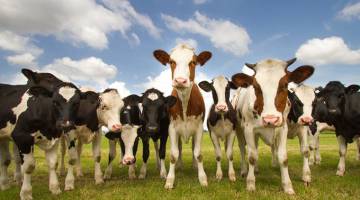FOR a month and a half, Mr Thomas Mangena of Jeka area in Mberengwa District, Midlands Province lived in what seemed to be a bad dream that he wished he would one day wake up from. The reality, however, was that it wasn’t a dream, but that his wealth was slowly vanishing right in front of his eyes, and there seemed to be nothing he could do to stop it.
Every day he watched his herd of 13 beasts die one by one and despite spirited efforts in following the local veterinary’s instructions to the tee, he watched his entire herd decimate. Mr Mangena first noticed that something was amiss in early June when two of his cattle started showing symptoms of weakness to such an extent that they failed to walk out of the kraal to the grazing lands.
Assuming it was a minor ailment that would pass, he tried to pen feed the animals, hoping they would regain their strength in no time. He was dismayed when two of the sick cattle succumbed to the mysterious disease on the same day. In less than 12 hours, the father-of-five and sole breadwinner to the family had lost a significant part of his wealth.
Mr Thomas Mangena points to his empty kraal as all his cattle succumbed to the disease. Panic gripped the surrounding homesteads in Ward 33, Mberengwa, when reports started filtering in that cattle were succumbing to a mysterious ailment that killed them within hours.
“As you can see, my kraal is empty, an entire herd of 13 cattle were wiped out in less than two months. When the first two beasts died hours apart, I assumed they may have consumed a poisonous plant in the grazing lands, but almost every three or four days, more cattle were dying,” said Mr Mangena.
“I’m left with nothing, all my hard work in the last 10 years or so is gone. I have no idea how we will plough the fields this planting season. Next month, other villagers will start preparing their fields by fencing them off with logs and barbed wire, but I don’t even think I will have the strength for that.”
The absence of fresh cow dung is just one of the easiest ways of showing that the kraal hasn’t been occupied by cattle for a while now. Mr Mangena is not the only one in the area counting losses. Ward 33 councillor, Collin Mangena, is another victim after losing 19 cattle.
“I spend most of my time at Jeka Business Centre where I run a grocery shop and butchery so when I heard that three of my cattle were unwell, I quickly rushed to my homestead. I phoned the local veterinary officer and explained the symptoms and he advised us to take our cattle to the dip twice a week while he arranged to come and investigate,” he said.
“As the local leader I told every villager to dip their cattle as advised by the veterinary department and we all followed the instructions but we continued losing our livestock.”
Cllr Mangena said in three months, he had lost 19 cattle.
“My kraal is empty and I would say the problem started around the beginning of May although most of us lost most of our cattle between June and July,” he said.
“Other villagers with smaller herds lost between five to 10 cattle depending on how many beasts each one of them had. But in most cases, villagers lost entire herds.”
Being the dry season, Cllr Mangena said their animals were vaccinated against a range of diseases. One local farmer reportedly lost 27 cattle.
“No one deserves to lose even one cow, but I’m pained when I think of my neighbour who lost 27 beasts. He is currently in South Africa visiting his children and I hope they will counsel him so that he accepts the reality,” said Cllr Mangena.
A local villager, Mrs Phindile Mvundla, who also lost four cattle, said local veterinary officials made numerous visits to the affected farmers in Ward 33 and kept advising them to dip their cattle.
“Almost every villager had fresh meat and biltong because cattle were dying every day. I buried two of my cattle after they died the same day. We are appealing to Government to come to our rescue,” she said.
“It’s just a few months before the rain season and we all depend on draught power for tiling the land so without cattle we will starve.”
Midlands provincial veterinary officer Dr Martin Sibanda said local veterinary officials from Mberengwa were dispatched to Ward 33 following the reports of the loss of cattle.
“It’s incorrect that entire herds have been wiped out because we are still dipping cattle in the area you have mentioned, which tells you that there is still livestock there,” he said.
“I’m not in the office to give you the specific number of cattle that were lost in that area, but I will have the exact details when I liaise with the Mberengwa office.”
Livestock production in Zimbabwe is an important source of income and a safety net for millions of people, particularly rural women, and youth, and is a significant contributor to the agricultural economy.
Cognisant of the fact that the livestock sector has to be run as a business to ensure that it makes a significant contribution to Zimbabwe’s socio-economic growth, the Government has crafted a number of national blueprints, namely, the NDS1, the Agriculture and Food Systems Transformation Strategy and the Livestock Growth Plan (2020-2025).
Key strategies of the Livestock Growth Plan entail the following components: improvement in animal nutrition; genetics improvement; improvement in animal health; climate change adaptation and small stock production; development of markets and trade infrastructure; and resource mobilisation.
Source Byo24News








